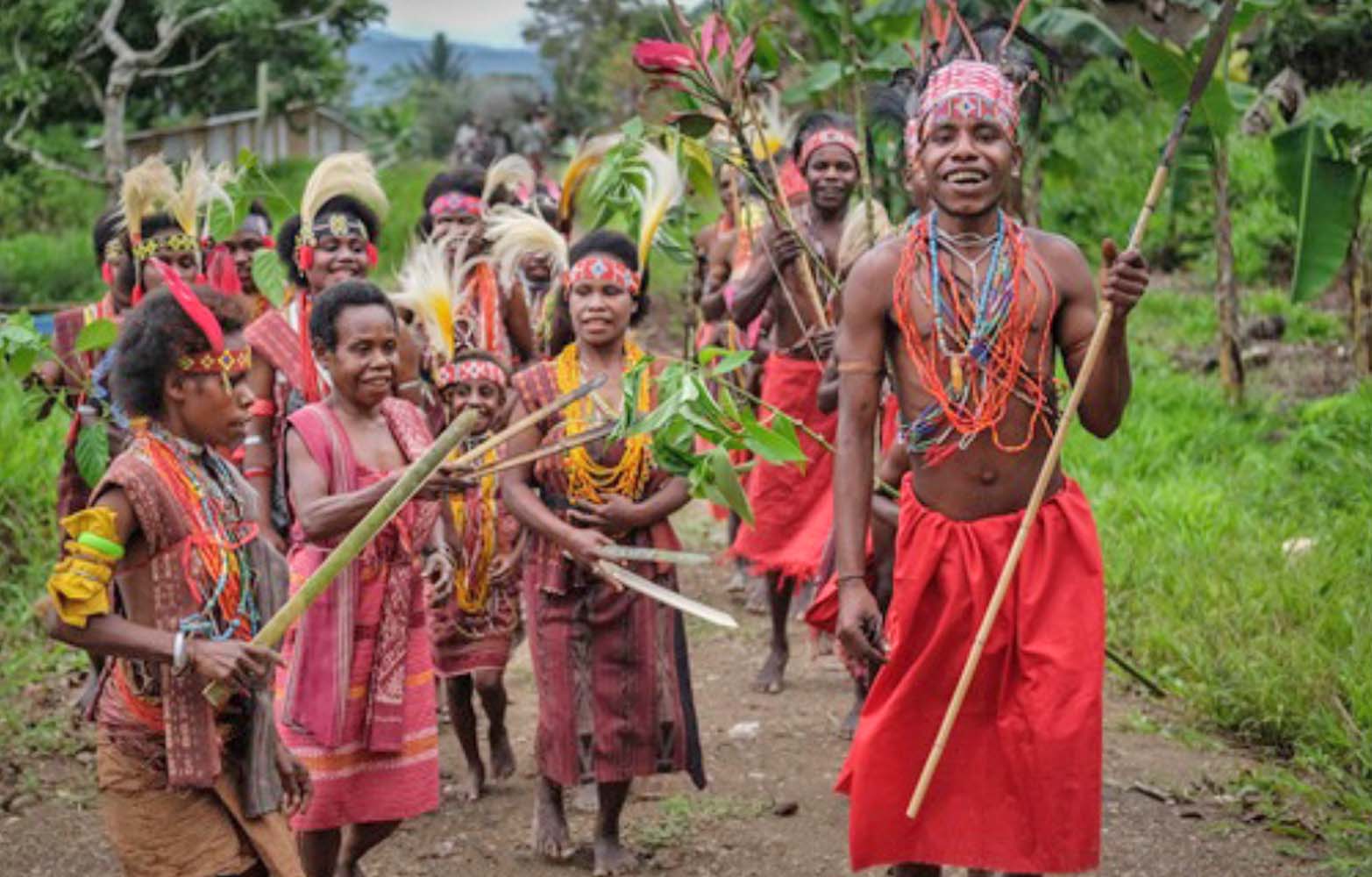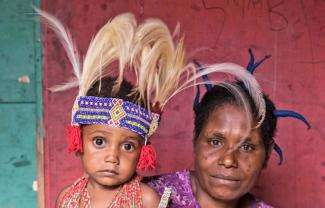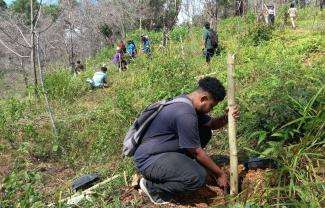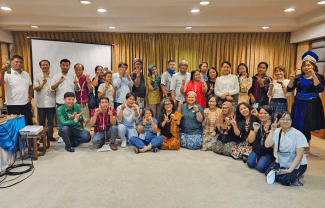Realising rights-based conservation and a sustainable development agenda in Papua to protect the last remaining Indonesian primary forests.
BASIC METRICS
- Primary forest area (source): 25 million ha
- Carbon storage/sequestration: store 5,081 million tons of carbon
- Keystone species: birds of paradise, tree kangaroos, rainbow fishes, birdwing butterflies, black orchids
- Supporting indigenous groups, local people: 271 indigenous tribes
Context and values
The primary tropical rainforests of Australasia are the worlds’ third largest after the Amazon and Congo. Papua is the largest island in Indonesia at about 41 million ha, but with a relatively small population. It is divided administratively into two provinces: Papua and West Papua, with 42 districts or regencies. Papua is the most culturally diverse island in Indonesia, with more than 271 indigenous tribes and 5,000 clans who speak 414 different languages, practise different traditions, and have different traditional governance systems and values. Papua is among the poorest regions of the country, but is rich in forests and forest products.
Indonesian Papua has some of the world’s most diverse primary tropical rainforests – many of global significance. In 2018, the Ministry of Forestry and Environment reported that Papua’s forests cover 33.8 million ha, with about 25 million ha considered primary.
The island is endowed with an impressive range of diverse and unusual ecosystems, including glaciers, alpine meadows, cloud forests, lowland forests, karst lakes and rivers, savannahs, mangrove forests, coral reefs and seagrass beds.
Threats
Papua’s deforestation rates are below the national average, but the threat is increasing. Between 2001 and 2018, about 713,766 ha or 2% of the old-growth forests were cleared for logging, oil palm, mining, small-scale agriculture, expansion of new administrative areas, roads and infrastructure in Papua. Legal and illegal logging are the major contributors to forest loss in Papua.
Plans for national economic development established the extraction of natural resources as a priority for the country to boost economic growth and reduce poverty. To facilitate this, the public roads network is constructing a large highway to improve the transport infrastructure. However, the top-down investment design, with minimum local social investment, is creating new social problems and accelerating the destruction of the environment. The Center for International Forestry Research reported that about 86,416 ha of forest has been cleared near main roads since 2000. Ironically, the massive infrastructure development arrives at a time when indigenous Papuans are at their lowest capacity to adapt and benefit. Investment attracts migration, and reduces the opportunities for locals to be involved. Economic development plans should be reframed and roads and infrastructure projects rethought in order to channel benefits toward local communities rather than to large- scale extractives.
Solutions and responses
Strong spatial planning and designation of legal forest zones are crucial to control deforestation. The
Manokwari Declaration signed in 2018 sets a target to conserve 70% of forests, which means both provinces will have to re-designate 10–30% of their current production and conversion forests to conservation status during the spatial plan revision. This should complement the new sustainable development portfolio to adopt low-emission development actions, yet the challenge is considerable.
Implementing a rights-based conservation policy and sustainable development agenda in Papua to
protect the last remaining primary forests is a complex task. It relies on the restructuring of the economic development portfolio, securing indigenous people’s rights and their legal access to the resources, and harmonising local and national regulations, with clear planning of forest zoning and capacity development for local actors.
Progress is being made at the provincial level. A year after the Manokwari Declaration was signed, the West Papua Province Parliament approved the special regulation for sustainable development and recognition of indigenous people’s rights. A few years earlier, Papua Province legalised three special regulations on sustainable forests management, natural resources and indigenous community rights recognition. Several districts also passed local regulations on rights recognition and conservation. Understanding the potential overlap with national policy and regulation, both provinces signed memoranda of understanding with the National Development Planning Agency to pilot low-emission development.
The provincial governments, through a multi-stakeholder task team, are now working on revisions to spatial planning and forest zoning to meet the 70% forest conservation target, integrating community boundary- mapping and land rights recognition into the policies, and creating green economy roadmaps. The target is also designed to preserve the rich biodiversity and the ecoservices that forests provide for the communities on the island that are in line with the welfare development of Papuans. The provinces will need to develop transparent indicators to monitor both the implementation and maintenance of conservation actions.
By 2019, about 3.6 million ha of customary areas/ territories and traditional zoning have been mapped by NGOs and customary community groups. The forestry department of the province has established a task team, including customary community groups, to work on accelerating social forestry and customary forests facilitation in Papua, with a goal to designate at least two million ha in five years. Capacity-building programmes for indigenous and local communities are central to the task force programme. Many actors believe that local economies in Papua should be developed incrementally and based on clear tenure arrangements and strong legal safeguards. New economic development pathways that the government has announced with “zero deforestation” investment should be translated into practical actions.

References:
Gaveau, D. (2019) Drivers of forest loss in Papua and West Papua. Center for International Forestry Research (CIFOR).
Fatem, S.M., Awang, S.A., Pudyatmoko, S., Sahide, M.A., Pratama, A.A. and Maryudi, A. (2018) Camouflaging economic development agendas with forest conservation narratives: A strategy of lower governments for gaining authority in the re-centralising Indonesia, Land use policy. 78, 699–710.
Indri S. et al., 2018, Roads for Communities: Building Road Connectivity Infrastructure for the Livelihood of Indigenous Papuans and the Environment, Executive Summary, The Asia Foundation.
World Resource Institute, Forest Pulse: The Latest on The World’s Forests, Forest Pulse: The Latest on the World’s Forests (accessed on 6 October 2021).




